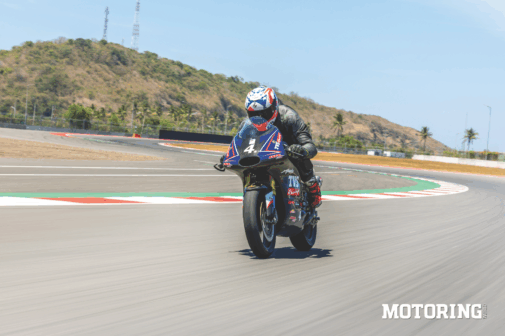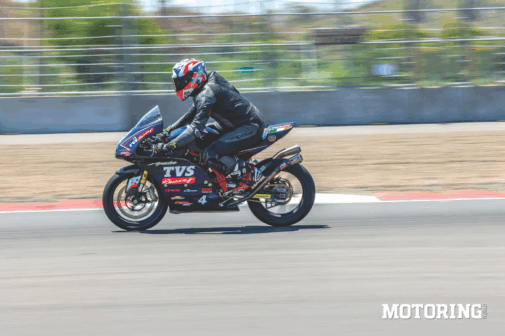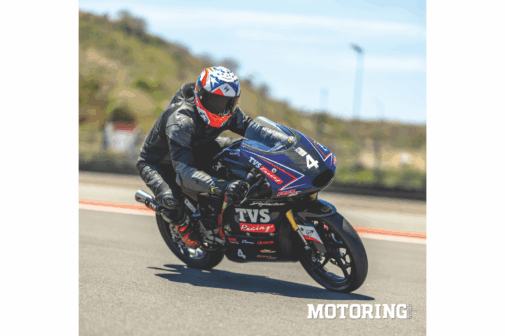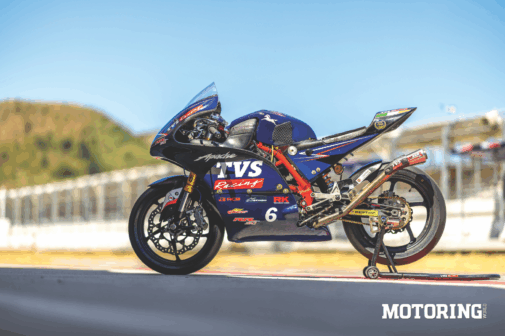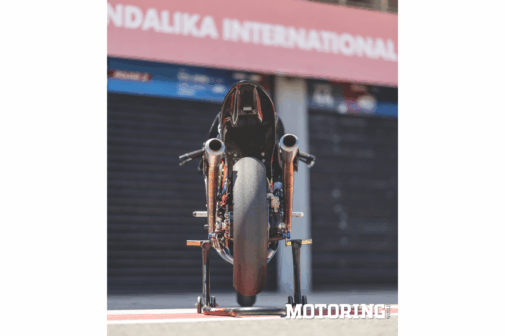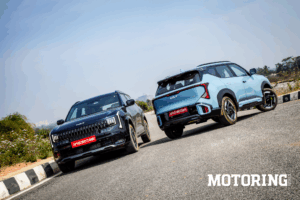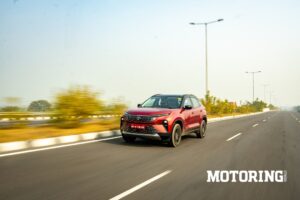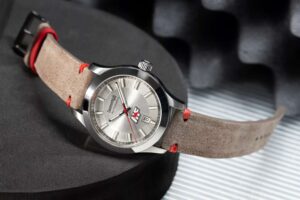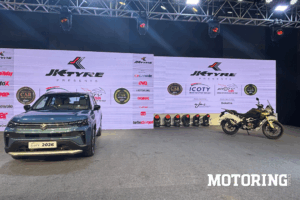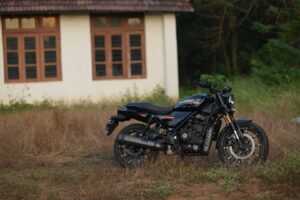Photographs by TVS Racing
What makes us wake up before the alarm even goes off? Why are we already on the road while the world still sleeps? Why run that extra kilometre, hammer out one more set at the gym, or stay up all night chiselling draft after draft of a story? It’s that hunger for perfection, isn’t it — that pulse that insists you move faster, harder, further. That’s what makes us tick. What makes us feel alive. TVS Racing is no exception to this sentiment, and the Apache RR 310 from the Asia Road Racing Championship One Make Championship is a testament to that drive.
But it all started with the production-spec RR 310. Since its debut eight years ago, TVS has relentlessly refined and evolved the motorcycle to the point where it now produces power rivalling its Japanese parallel-twin competitors. Over the years I’ve ridden every road-going iteration of this bike, feeling it grow smoother, quicker and more precise each time. The ARRC race bike is the ultimate expression of that evolution — and despite knowing that, nothing could have prepared me for truly understanding it better than a track day at Mandalika International Circuit.
I was almost as nervous as I was when I first rode a litre-class superbike on a track. Because it was a bespoke race machine? Yes. But more than that, because this RR 310 produced almost twice as much power as the stock bike while weighing nearly 50 kg less. Impressed already? The journey to achieving this will leave you awestruck.
The ARRC bike features a forged piston, titanium valves with a high lift camshaft and a ram-air intake to make the most of its 312cc single cylinder engine. Right from its debut in 2021, this has been one of the most exquisite bikes to come from India. It is in a league of its own (quite literally), yet every year TVS Racing has worked on it to make it faster and sharper. In 2022, it clocked 212 kph — a phenomenal feat in itself — yet TVS pushed it further to achieve 215 kph in 2023 and 216 kph a year later. And it wasn’t just for bragging rights. Over those three years the ARRC bike shaved more than seven seconds off its fastest lap.
The ram-air system now feeds 3.5 per cent more pressure to the airbox, while the carbon-fibre fairing has been revised for 20 per cent better airflow to the radiator, making it run cooler by 7ºC. The reworked fairing also provides more stability on straights and more control in corners. Currently, it generates 3.5 kg of downforce at 200 kph, but an image shown during the briefing may or may not have teased some additional aero tech under testing. Though the two briefing sessions gave me plenty to chew on, it was time to head out and actually understand what the bike was all about.
From the moment I sat on the bike, it was obviously nothing like the production-spec model. The clip-ons were low, the footpegs high and a thin foam pad on the subframe doubled as a seat. Thankfully, the ergonomics were adjusted to my riding style. And once I fired up this bike, a chill ran down my spine. The two end cans were deafeningly loud. The first two laps were to get a hang of the bike, the track and, of course, to get the slick racing tyres up to temperature. I chose to eliminate one stress point by opting for a regular gear shifter instead of the GP-style shift that this bike normally has.
Just as I went in for my first hot lap, I was already at 174 kph down the straight, aiming for the hard right that follows after. Two fingers on the front brake, a gentle tap on the rear while going from sixth to fourth, and almost telepathically, the bike leaned into the corner with the poise of a ballerina. Next, a right turn followed by a flowing left, and I was already scraping my knee slider. This was unreal. In fact, it was so light to move that I ended up turning in sooner than I had calculated.
The engine, too, felt anything but like the RR 310’s. We were advised to shift up only post 8500 rpm, which I missed on the first lap, and the bike felt docile. But as soon as I started following the shift indicators, the bike switched character. That said, I had to be quick with my shifts once the red lights on the speedo blinked, else the engine would hit the rev limiter in a fraction of a second. Thankfully, a quickshifter made that task easy. Even aggressive downshifts were handled with grace courtesy of the auto-blipper.
I picked up pace in the subsequent laps and also made more errors than I had thought I would — but not once did I feel the bike would punish me. And the tyres? It felt like the only limit was myself. Soon, we were back in the pits for a break before we headed for the next session. My lap time was a disappointing 2m 17s.
Now that I knew the bike and the track better, I made more changes to the ergos — the clip-ons were pushed outwards a bit and the footpegs were lowered. Suspension? The stock settings on the Ohlins USDs and the Ohlins STX 46 worked just fine.
This time, I switched the engine braking to level three from level two. And right from the moment I exited the pitlane, I could feel the difference and the confidence. Now that I was more comfortable on the saddle, I could move more freely. I was going faster through every corner and braking later than before. It seemed like the Dunlop slicks had unlimited grip. And the braking equipment? Top-notch. TVS had picked a 340-mm Galfer disc at the front with a J.Juan calliper and a Brembo RCS19 master cylinder. The result? Brakes that didn’t fade despite being on the track for almost three hours. The bite was ferocious, consistent and progressive.
Jagan and Vorapong, ace racers and our instructors for the ride, were casually scraping their elbows through some of the fast corners of the track. I didn’t, but a couple of more sessions and maybe I would have — for this was the first time I saw the kerb this close at flat-out speeds. And as I retired for the day, all dehydrated and cramped, I had shaved 10 seconds from my previous session.
Back in the pits, peeling off my gloves and catching my breath, I realised this is why we wake up before the alarm. That hunger I spoke of at the start is baked into the RR 310 ARRC as much as it’s baked into us. Years ago it gave me my first knee-down; today it gave me ten seconds off my lap time and a reminder that chasing perfection is the only way to feel truly alive.










